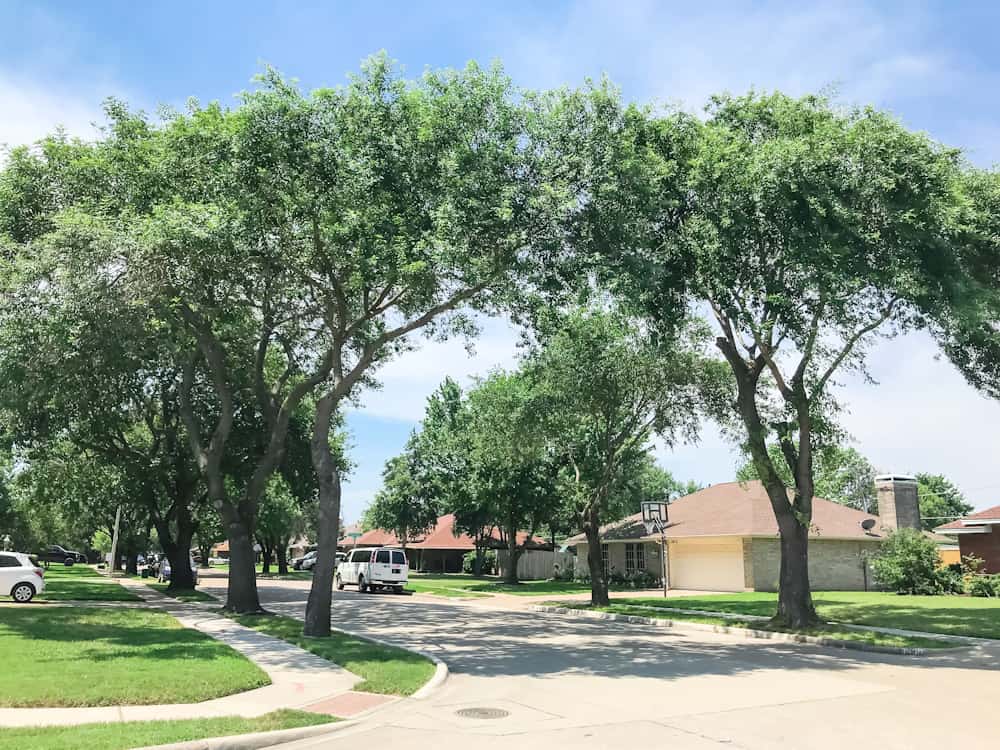
In the heart of Texas, where the land unravels in a tapestry of prairies and woodlands, stands a silent guardian that weaves tales of resilience and legacy, the majestic Texas Oak trees. These towering giants have long been revered not just for their striking beauty or sturdy presence, but for their intricate role in shaping the very essence of Texas' landscape and identity. As pillars of strength deeply rooted in both soil and folklore, oak trees embody a living testament to nature's endurance against time's relentless march.
Beyond mere arboreal wonders, these oaks stand as guardians of biodiversity, hosting a thriving community of flora and fauna within their sprawling canopies. Their branches reach out like wise elders sheltering generations under their verdant embrace while silently orchestrating the dance of life within their leafy realms. In an ecosystem teeming with life's delicate balance, these oak sentinels hold key positions as providers of sustenance, shelters from stormy skies, and stalwart defenders against encroaching urbanization. Join us on a journey through this ode to Texas Oak trees—where each leaf whispers secrets from centuries past and future promises bestowed upon those who listen closely to nature's timeless symphony.
Characteristics of Texas Live Oak Trees
The enchanting Texas Oak species stands tall with branches outstretched like nature's welcoming embrace. Its leaves, a defining feature, vary from species to species; the Shumard Red Oak proudly displays lobed green foliage that transitions into brilliant reds and oranges come autumn, while the Post Oak boasts smaller, rounded leaves in shades of vibrant green. The bark of these majestic trees tells tales written by time itself; from the intricate furrows on the Burr Oak to the smooth gray-brown skin of the Blackjack Oak, each type holds a unique narrative waiting to be deciphered.
In the north part of Texas, an array of oak varieties flourishes under the warm sun and gentle rains. The Chinkapin Oak stands as a symbol of resilience with its narrow pointed leaves resembling chestnut burrs delicately dancing in the wind. Meanwhile the Lacey Oak brings a touch of elegance with its intricately dissected silvery-green foliage fit for an arboreal ballroom. As these diverse oaks populate parks, yards, and forests around us, their individuality shines through in every fluttering leaf and whispered rustle – a testament to nature’s artistry at work in our midst.
Texas Live Oak Tree Care
When it comes to planting your Texas Oak tree, proper technique is crucial for its long-term health and growth. Begin by selecting a suitable location that offers well-draining soil and adequate sunlight. Dig a hole twice the width of the root ball but no deeper than its current depth, ensuring the top roots are level with or slightly above ground level. This practice prevents issues like water pooling around the trunk, which can lead to rot and other diseases. Gently loosen any compacted roots before backfilling with native soil mixed with organic matter to provide essential nutrients during establishment.
Watering plays a pivotal role in nurturing your Texas Oak through various seasons. While newly planted trees require regular watering—approximately 1-2 inches per week—it's important to adapt this frequency based on weather conditions and soil moisture levels. Consider using soaker hoses or drip irrigation systems to deliver water directly to the root zone, encouraging deep rooting and resilience against drought stress. During extended dry spells, pay attention to signs of wilting or leaf discoloration as indicators that additional hydration may be necessary for your oak’s well-being.
Fertilization serves as a supplemental boost for your Texas Oak’s vitality when incorporated into your care routine. Opt for slow-release fertilizers specifically formulated for trees, applying them in early spring before new growth emerges. Avoid overfeeding as excessive nutrients can harm rather than benefit your oak tree; instead, prioritize balanced formulations that promote steady development without inducing rapid yet weak shoot growth. Regular monitoring of foliage color and overall health aids in gauging if fertilization adjustments are needed throughout the growing season—a proactive approach towards sustaining your Texas Oak’s strength and beauty.
Pests and Diseases of the Oaks
Exploring the world of Texas Oak trees reveals a vulnerability to various pests that can thwart their beauty. One notorious foe is the Gypsy Moth, known for defoliating vast oak populations that weakens these majestic giants. Similarly, the invasive Emerald Ash Borer poses a silent yet lethal threat as it tunnels beneath the bark, disrupting nutrient flow and leaving an irreparable trail of damage across once-thriving oak communities.
While pests wreak havoc,, disease is another common problem for the Texas oak, lurking amidst their resilient branches, waiting to strike unsuspecting victims. Fire Blight emerges as a formidable adversary with its rapid bacterial spread causing wilting leaves and blackened twigs—a sinister sight amidst the lush greenery. Moreover, Oak Wilt stands out as another insidious enemy, swiftly spreading through interconnected root systems and interrupting vital water transport mechanisms within these sprawling wonders of nature.
As guardians of our cherished Texas Oaks, understanding these common pests and diseases becomes paramount in preserving not just individual trees but entire ecosystems reliant on their enduring presence. Vigilance against these threats proves essential in ensuring the longevity and vitality of these iconic symbols shaping Texas’s landscape with unwavering grace.
Red Oaks Role in Local Ecosystem:
Texas Oak trees play a crucial role in the intricate tapestry of the North Texas ecosystem. They serve as vital hubs of biodiversity, providing shelter, food, and nesting sites for a myriad of wildlife species. From the acorns that sustain squirrels to the sturdy branches that cradle bird nests high above the forest floor, Texas Oaks act as bustling centers of activity within their habitat. As keystone species, they shape not only the physical landscape but also contribute significantly to the ecological balance of their surroundings.
Beyond their significance for local fauna, mature oak trees deliver invaluable environmental benefits to the Texas landscape. Their extensive root systems help anchor soil in place, preventing erosion during heavy rains or winds. Additionally, oaks act as natural air purifiers by absorbing pollutants such as carbon dioxide and releasing oxygen—a process that contributes to cleaner and fresher air quality in urban areas where these trees are found aplenty. Furthermore, mature oaks offer cooling shade during hot Texan summers while conserving energy by reducing heating costs in winter through windbreak effects—an eco-friendly gift from nature that keeps on giving year-round.
Embracing Your Native Oak Trees with Tree Service
As we wrap up our journey through the enchanting realm of Texas Oak trees, it’s crucial to reflect on why these majestic beings deserve our utmost admiration and care. These native oaks stand not just as mere fixtures in North Texas landscapes but as guardians of a delicate balance that sustains local biodiversity and ecological harmony. With their sprawling canopies providing shade for countless creatures and their roots anchoring soil against erosion, oaks exemplify resilience intertwined with grace.
Moreover, embracing native oak trees is a testament to honoring the deep-rooted heritage of Texas itself. These ancient sentinels have witnessed centuries unfold, mirroring the state's evolution from wild frontiers to bustling cities while imparting an enduring sense of continuity and belonging. By understanding and cherishing our native oaks, Texans forge a profound connection to both nature's cyclical rhythms and the intrinsic values that bind communities together across time.
In essence, caring for these revered companions isn't merely a duty but a privilege—an opportunity to nurture something inherently greater than ourselves. When we water them, prune them with precision, or simply bask in their dappled shade on a summer afternoon, we are not only tending to arboreal wonders but sowing seeds of stewardship for future generations. Let us pledge then—together—as stewards of this land steeped in oak lore—that each rustling leaf whispers tales of reciprocity between humans and the natural world.



